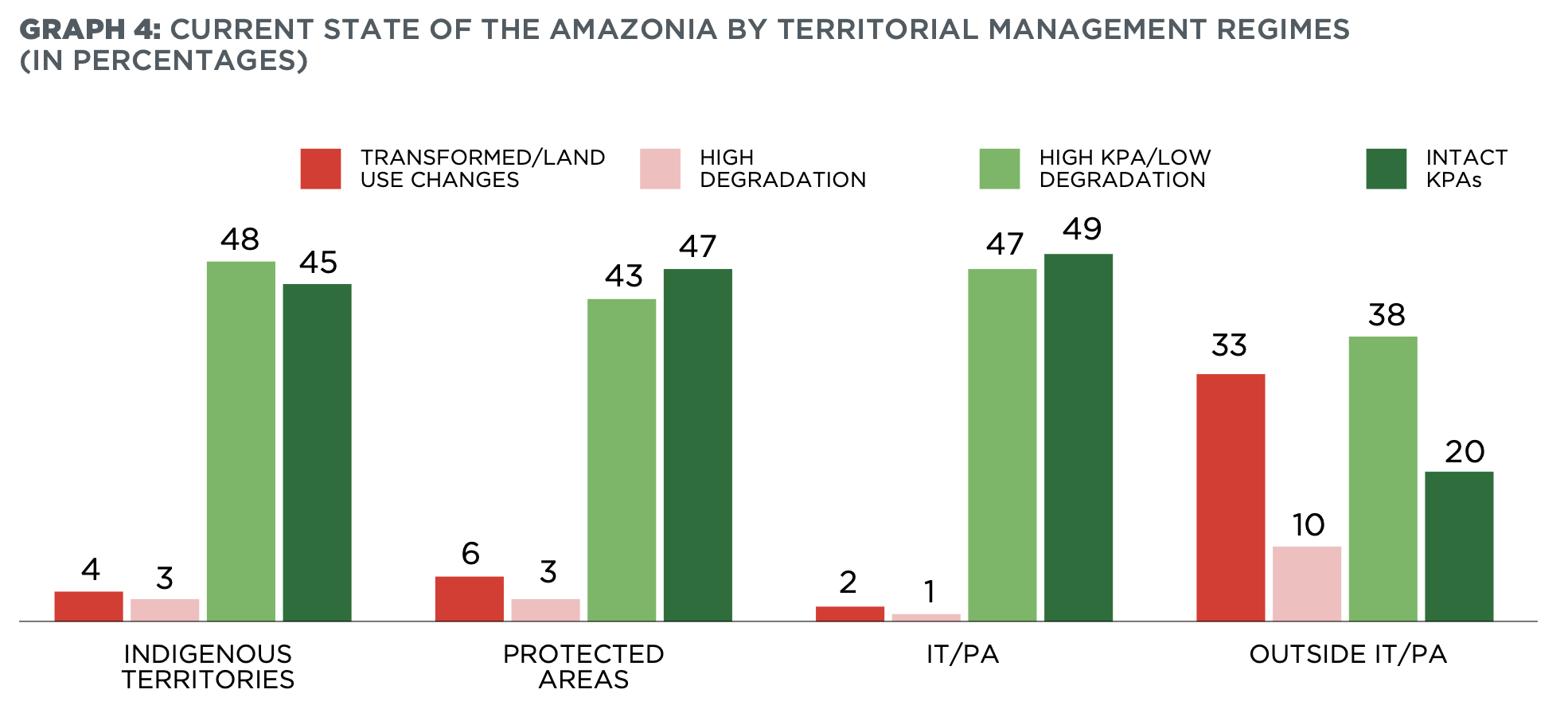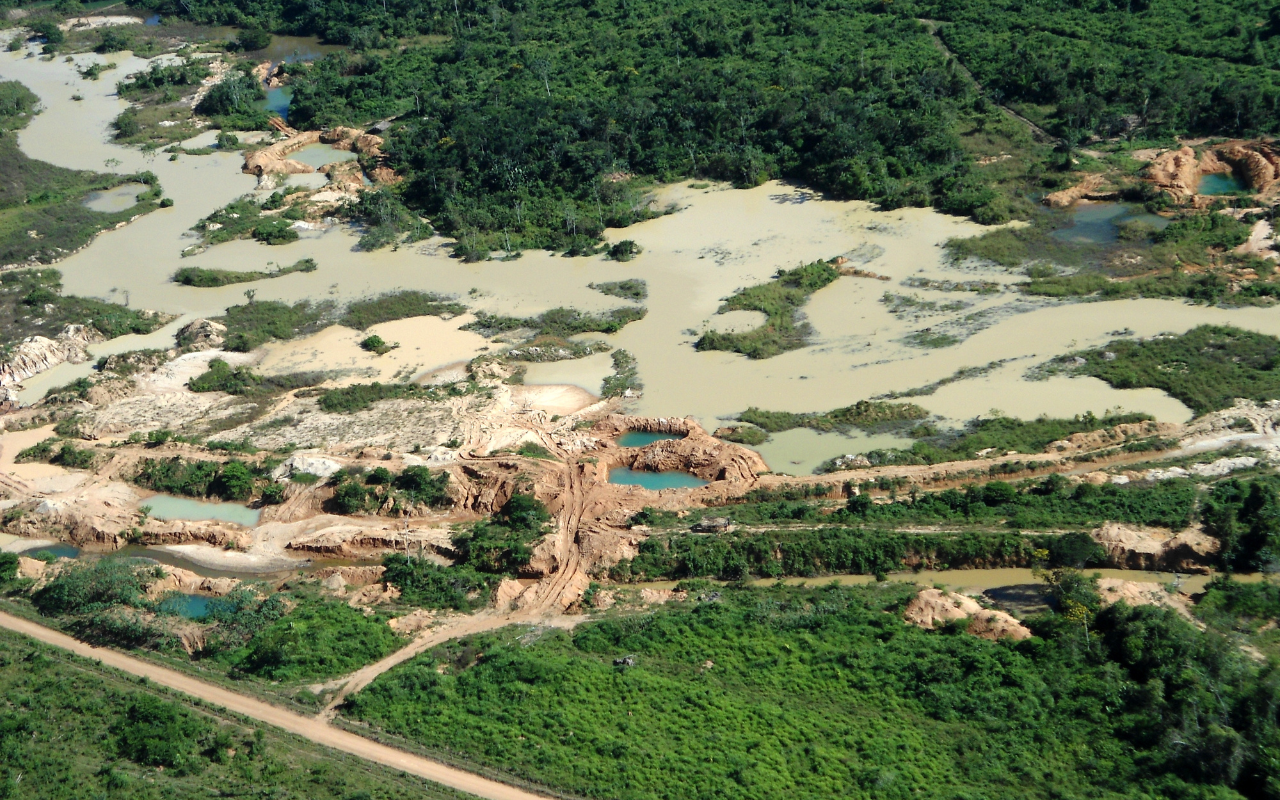New report reaffirms the critical role of Indigenous-led efforts in protecting the Amazon rainforest
- Nature Conservation
- Land Conservation
- Forests
- Indigenous Tenure
- Policy & Governance
- Amazonia
- Southern America Realm
Amazonian Indigenous leaders and researchers from nine countries presented new evidence showing that the Amazon rainforest is heading towards a point of no return due to deforestation and that the intact forest that remains requires immediate protection.
The groundbreaking report, Amazonia Against the Clock: a Regional Assessment on Where and How to Protect 80% by 2025 offers degradation and transformation rates of the rainforest at a country level. The report was presented at the 5th summit of the Amazon Indigenous Peoples, organized by the Coordinator of Indigenous Organizations of the Amazon River Basin (COICA), one year after the approval of Motion 129 of the Congress of the International Union for Conservation of Nature (IUCN), which seeks to avoid the point of no return in the Amazon by protecting 80% of the Amazon by 2025.
.png)
Map of the Amazonia categorized in priority areas, intactness, low degradation, high degradation, and transformation. Image credit: RAISG
Solutions to deforestation
The report was presented by COICA in conjunction with the coalition of the Amazonia For Life: Protect 80% by 2025 Initiative. One Earth is honored to be a part of this coalition alongside Stand.earth, RAISG, AVAAZ, Wild Heritage, Amazon Watch, and Artists for Amazonia. The initiative states that the protection of 80% of the Amazonia by 2025 is still possible, and there are ways to prevent further destruction. The solutions offered by the report include the recognition of 100 million hectares of Indigenous Territories, moratoriums to safeguard intact ecosystems with low degradation, an inclusive model of co-governance, and a proposal for the conditional cancellation of the debts of the Amazonian countries.

Current state of the Amazonia by territorial management regimes. Image credit: RAISG
Indigenous territories have healthier forests.
The report, prepared by the Amazon Network of Georeferenced Socio-Environmental Information (RAISG), includes a set of new maps based on 36 years of data showing that there was 86% of deforestation in areas without territorial management regimes aimed at conservation. The main driver of deforestation in the Amazon is the livestock industry. Studies find that 66% of the Amazon is subject to some type of constant or permanent pressure: the oil industry, mining, and over 800 planned and operating hydroelectric plants, among others.

Graph of the current state of the Amazon by country. Image credit: RAISG
Savannization in the Amazon Rainforest
A shocking finding reveals that 34% of the Brazilian Amazon entered a process of land transformation, with the second highest rate being in the Bolivian Amazon. Savannization is already a reality in the southeast of the region, mainly in Brazil and Bolivia. The data shows that both countries are responsible for 90% of the deforestation and degradation in the entire region and that they share encroachment as a central cause of deforestation. This issue places states and their legal frameworks at the center of the solutions.
66% of the Amazon is subject to some type of constant or permanent pressure. Oil blocks, hydroelectric power plants, and mines are planned throughout the Amazon. Current legal frameworks create conditions for states to grant licenses in intact forests or Indigenous lands without the freely given prior and informed consent of the people living in the region.

Mining in the Brazilian Amazonia. Image credit: Creative Commons, Tarcisio Schnaider
Conditioned debt forgiveness to protect the Amazon
The restrictions of national budgets combined with a debt that averages 78% of Latin America’s regional GDP lead governments to overexploit the Amazon’s natural resources. Total debt service alone represents 59% of their exports of goods and services. The study includes an innovative proposal for debt forgiveness to safeguard 255 million hectares of intact ecosystems that are at imminent risk.
“The foreign debt of Amazonian countries must be understood as a systemic driver and fuel for extractive activities throughout the region. As a coalition, we propose the cancellation of this debt as an immediate protective measure to alleviate the economic challenges facing our countries. This cancellation would be conditioned to the protection of 80 percent of the Amazon. Industrialized countries and international financial institutions would assume responsibility for safeguarding the planet, mitigating climate change, and alleviating pressure on the Amazon with the leadership of the Amazonian countries." — Tuntiak Katán, Vice Coordinator of COICA.
Support Indigenous-led conservation
It's time to demand that our government officials take action to protect and secure the future of our planet. Add your name to the Amazonia for Life: Protect 80% by 2025 declaration calling for Amazonian governments to take climate action now!
Download the Full Report%20(1).jpeg?auto=compress%2Cformat&w=1440)


